Sharks have one of the worst reputations in the animal kingdom. Movies, headlines and viral videos make them look like relentless man-eaters—yet statistically, you are far more likely to be injured by a dog, a horse or even a cow than by a shark.
Still, some shark species are large, powerful predators with the jaw strength and teeth to cause fatal injuries if they do bite. When people talk about “aggressive sharks,” they’re usually referring to:
species most often involved in unprovoked bites on humans, and
species that regularly hunt large, fast-moving prey and may investigate unfamiliar objects (including humans) with their mouths.
Out of hundreds of shark species, fewer than 30 have ever been confirmed to bite humans unprovoked, and only a handful are responsible for most serious injuries. Below, we look at the 12 species most often associated with attacks, what makes them risky—and why most still don’t “hunt” humans.
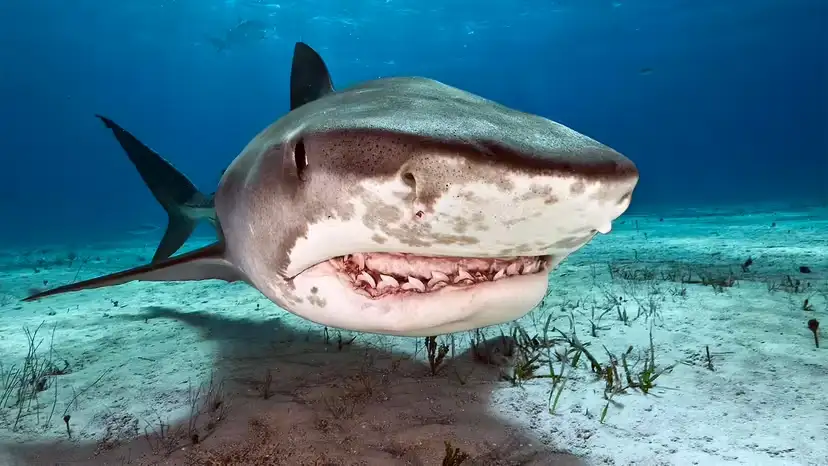
When shark scientists talk about risk, they usually rely on long-term records such as the International Shark Attack File (ISAF). These databases track:
Unprovoked bites – when a shark bites a person who is simply swimming, diving or surfing.
Provoked bites – when humans harass, touch, feed, hook, or otherwise disturb a shark.
Unprovoked bites are the most relevant when ranking “aggressive” species, because they show natural behavior rather than stress or self-defense.
But numbers alone can mislead:
Some sharks are easy to identify (great whites, hammerheads).
Others are misidentified or lumped into groups (for example, requiem sharks).
Many bites, especially in low-income coastal regions, are never reported.
So the list below is not a “most evil sharks” list, but rather the species most often linked to serious, unprovoked incidents.
Great white sharks (Carcharodon carcharias) top nearly every global list for unprovoked attacks on humans and boats. They are the species behind many high-profile incidents and the inspiration for Jaws.
Why they’re dangerous:
Adults can exceed 6 meters (20 ft) and deliver one of the strongest bites of any animal.
A single test bite can remove tens of pounds of tissue. Even if the shark doesn’t return to feed, the initial injury alone can be fatal due to blood loss or organ damage.
Great whites are curious hunters. Much of their behavior seems exploratory: they bump, circle and sometimes bite to “test” unfamiliar objects, including surfboards and swimmers.
What they really want to eat:
Their preferred prey is marine mammals, especially seals and sea lions, which are rich in fat.
Many scientists believe “mistaken identity,” particularly in murky water or from below, explains some bites on surfers and swimmers.
Human risk level:
Great whites are relatively rare and usually stay in cooler, offshore waters, so most beachgoers will never see one.
Statistically, the chance of being bitten by a great white remains extremely low, but when it happens, the severity can be high.

Tiger sharks (Galeocerdo cuvier) are often called the “garbage cans of the sea” because they will eat almost anything. Autopsies have found items as bizarre as coal, cans, fishing gear and even drums in their stomachs.
Why they’re dangerous:
They’re large apex predators, commonly reaching 3–5 meters (10–16 ft).
Their jaws are extremely powerful and flexible, allowing them to swallow large chunks of prey.
Unlike some species that take a test bite and release, tiger sharks are more likely to continue feeding once they’ve committed.
Diet and behavior:
They feed on fish, turtles, seabirds, rays, other sharks and almost any animal they can overpower.
Their serrated teeth are designed to cut through tough shells and bones, making them highly effective predators in coastal zones.
Human risk level:
Tiger sharks frequent warm, shallow coastal waters, including areas where people swim or surf.
They are among the top three species most often linked to fatal encounters with humans.

Bull sharks (Carcharhinus leucas) are widely regarded as one of the most dangerous sharks—not just because of their temperament, but because of where they live.
Why they’re dangerous:
They are strong, muscular, and territorial, with a reputation for boldness.
Bull sharks can tolerate freshwater, which means they can travel far into rivers and estuaries.
They often swim in murky, shallow water, exactly where people wade, swim, or fish.
Human risk level:
Many researchers suspect bull sharks are responsible for more attacks than records show, because they’re often misidentified or not seen clearly.
They are part of the “big three” (great white, tiger, bull) that account for the vast majority of serious or fatal shark incidents worldwide.
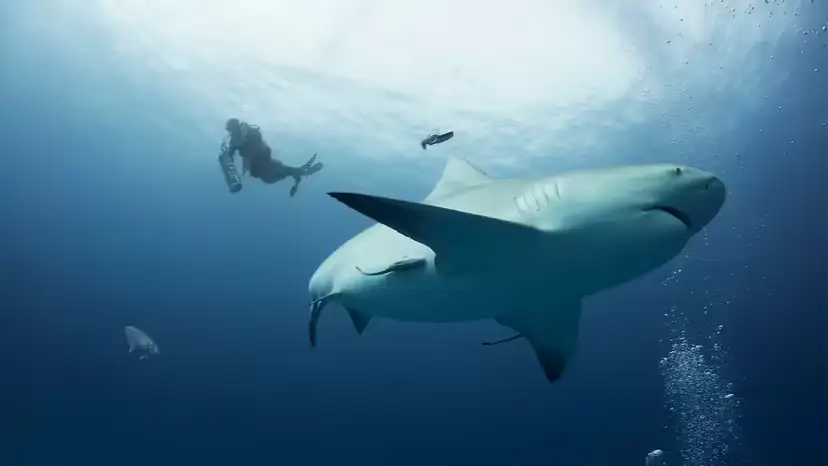
“Requiem shark” isn’t a single species but a family that includes many medium-to-large coastal sharks: tiger, bull, blacktip, gray reef sharks and more.
Why they’re on this list:
Requiem sharks are common in warm coastal waters, where people swim, fish and dive.
Many members of the group eat fast, schooling fish and can become highly stimulated by struggling prey or spearfishing activity.
Some species show a clear threat display: exaggerated side-to-side swimming, arched back, lowered pectoral fins and jaw gaping.
Human risk level:
Collectively, requiem sharks are responsible for dozens of documented unprovoked bites.
Identification can be difficult, so many bites logged as “unknown shark” may involve this family.

Despite their fearsome appearance, sand tiger sharks (Carcharias taurus) are less dangerous than they look.
Appearance and distribution:
Large, bulky body with a pointed snout and a mouth full of long, protruding teeth that often stick out even when the jaw is closed.
Found in warm and temperate seas worldwide, including the Atlantic coasts of North and South America.
Behavior and risk:
Generally slow-moving and shy, often seen hovering calmly near the bottom.
Most documented bites have occurred when sand tigers were provoked or startled, such as by spearfishing or handling.
Historically, they have been involved in several dozen attacks, but none confirmed fatal.
Conservation note:
Overfishing and slow reproductive rates have made sand tigers vulnerable or threatened in many regions, even though they pose relatively little risk to humans.
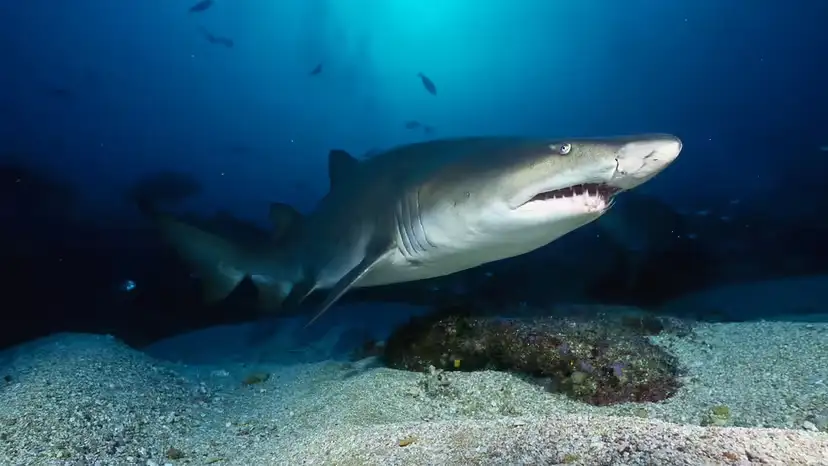
Blacktip sharks (Carcharhinus limbatus) are small to medium-sized requiem sharks that commonly interact with surfers and swimmers, especially in places like Florida.
Key traits:
Typically around 1.5 m (5 ft) long and about 18 kg (40 lb).
Recognizable by dark black tips on their fins.
Often hunt in schools, chasing small, schooling fish such as herrings and sardines.
Why they bite:
Many bites occur in shallow surf zones, where blacktips chase fish near shore.
In murky water, they may mistake a hand or foot for a fish, delivering a quick bite and then fleeing.
Most injuries are minor compared to those from larger sharks.
Conservation note:
Blacktips are heavily fished for meat and fins.
In some regions they are considered near threatened due to overfishing and habitat degradation.
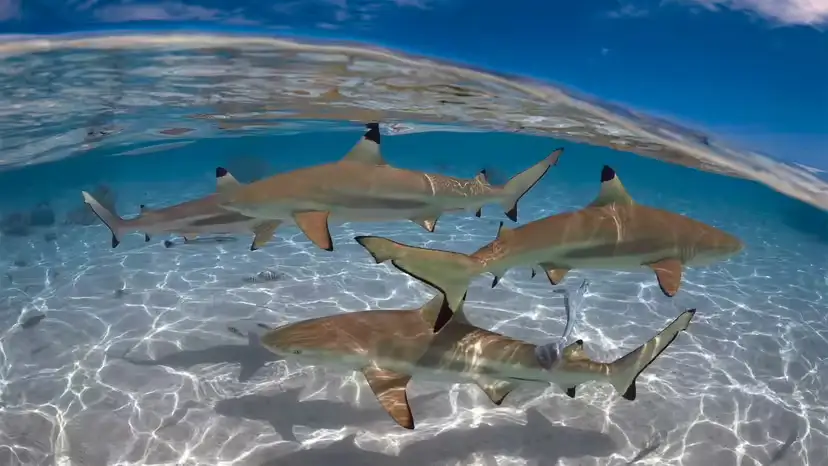
“Wobbegong” refers to several species of bottom-dwelling carpet sharks in the genus Orectolobus.
Why they’re on a list of aggressive sharks:
Wobbegongs lie motionless on the seafloor, using their patterned skin and skin flaps to camouflage themselves.
When a fish—or an unwary diver’s hand or foot—comes too close, they can strike very quickly.
Once they bite, they are notorious for hanging on, which can cause deep lacerations.
Behavior and risk:
Most incidents happen when people accidentally step on them, or place arms or legs close to the shark while diving or photographing.
They are not open-water hunters chasing humans; they are ambush predators that react defensively at close range.

Hammerhead sharks are a group of species known for their distinctive hammer-shaped head (cephalofoil), which enhances sensory abilities.
Why they’re here:
Large species such as the great hammerhead can exceed 6 meters (20 ft) and are powerful predators.
They hunt fish, rays, cephalopods and other sharks, often in warm, coastal waters.
Human risk level:
Despite their size and strength, documented hammerhead attacks on humans are rare, and fatalities are extremely unusual.
Most encounters involve curious approaches, not sustained attacks.
Like many large sharks, they can become defensive or territorial if harassed, speared, or cornered.

Spinner sharks (Carcharhinus brevipinna) are known for their spectacular feeding behavior.
Signature move:
They charge upward through shoals of fish, spinning rapidly and even leaping out of the water while rotating—hence the name.
Behavior and risk:
Spinner sharks mostly feed on small schooling fish, plus squid and other cephalopods.
Bites on humans often occur in turbid surf zones, where the shark is chasing prey and mistakes a limb for a fish.
Most recorded bites are not severe, and they are not considered intentionally aggressive toward people.
The bronze whaler (Carcharhinus brachyurus), also known as the copper shark, is a large, sleek requiem shark found in temperate coastal waters.
Key traits:
Adults often exceed 2–3 meters (6.5–10 ft).
Color ranges from grey to bronzy-olive, hence the name.
Recognizable by hooked upper teeth and a streamlined silhouette.
Behavior and risk:
Bronze whalers frequently follow schools of fish into nearshore surf zones, sometimes very close to swimmers or surfers.
They are strong, fast predators and can become assertive around spearfishing or chummed water.
While they have been implicated in a number of attacks, fatalities are rare.
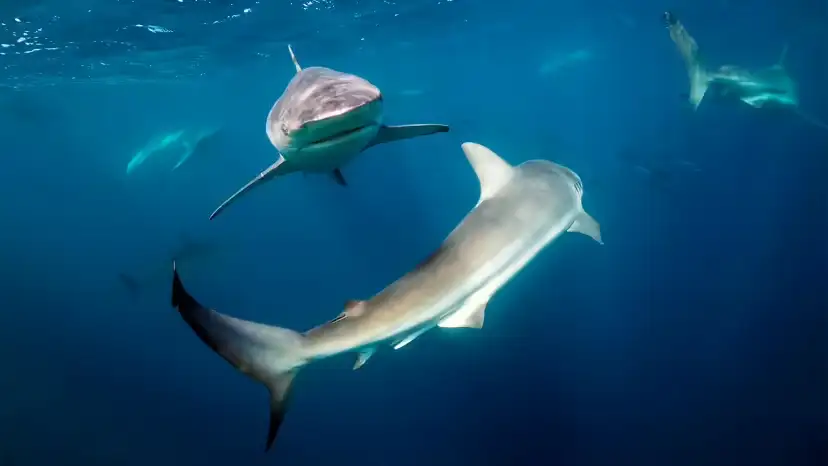
Blacktip reef sharks (Carcharhinus melanopterus) are common on coral reefs in the Indo-Pacific region.
Characteristics:
Smaller than many species on this list, usually under 1.6 m (5.2 ft).
Distinct black tips on dorsal and caudal fins.
Found in very shallow tropical waters, often just beyond the shoreline.
Behavior and risk:
Generally shy and wary of humans.
Most incidents occur when sharks are accidentally provoked, or during feeding situations in murky water.
They primarily hunt small fish, crustaceans and cephalopods.
The oceanic whitetip (Carcharhinus longimanus) is one of the most feared pelagic sharks—not because of high modern beach statistics, but because of its behavior in open ocean emergencies.
Why it has such a reputation:
Historically, oceanic whitetips were often first to arrive at shipwrecks or downed aircraft sites in deep water.
Survivors of wartime disasters have reported groups of bold, persistent sharks circling rafts or swimming among people in life jackets.
Many deaths at sea may never have been officially recorded as “shark attacks,” so their true impact is likely under-documented.
Modern encounters:
They inhabit deep, offshore tropical waters, far from typical bathing beaches.
Divers describe them as confident, persistent and highly investigative, often approaching closely and repeatedly.
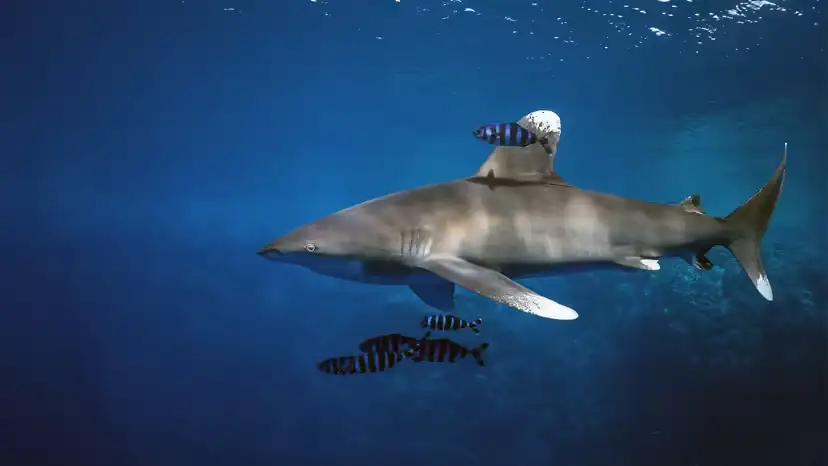
While numbers vary year to year, global data in a recent year shows around 70 confirmed unprovoked shark bites worldwide, with a much smaller number of fatalities.
A typical pattern looks like this:
United States – highest number of total bites, especially in Florida, due to huge numbers of people in the water.
Australia – fewer bites than the U.S., but often a higher proportion of serious or fatal cases due to larger sharks in some regions.
Other countries such as Brazil, South Africa, Mexico, Egypt, New Caledonia and island nations also report occasional incidents.
Remember: these numbers are tiny compared to the number of people who enter the ocean each year.
Within the U.S., most unprovoked bites happen in:
Florida – lots of surfers, swimmers and tourists + abundant small coastal sharks.
Hawaii – home to large tiger sharks and active ocean sports.
California, the Carolinas, New York, New Jersey – seasonal bites, often involving surfers and juvenile white or coastal sharks in nearshore waters.
Most U.S. bites are minor, “hit-and-run” type incidents where small or medium sharks nip and flee, often confusing a limb for a fish.
In terms of serious, unprovoked bites on humans, the three species most often highlighted by researchers are:
Great white shark
Tiger shark
Bull shark
Bull sharks are especially concerning because they enter rivers, estuaries and very shallow water, increasing the chance of contact with humans.
The great white shark holds the record for most documented unprovoked bites and fatalities, though records are influenced by identification accuracy and reporting rates.
Hammerhead sharks rarely bite humans. They are powerful predators, but most species are shy and avoid close contact. A small number of non-fatal bites have been recorded, usually involving specific circumstances like spearfishing or cornering the animal.
Tiger sharks are involved in slightly more recorded attacks and fatalities globally.
Bull sharks, however, may pose a higher everyday risk because they swim in shallow, coastal and freshwater areas where humans are common.
Both species should be treated with caution and respect.
Many experienced divers regularly and safely observe large sharks, including tiger sharks. Safety depends on:
avoiding feeding or teasing sharks
staying with a professional operator
following local guidelines
avoiding murky water and areas with active baiting or fishing
The overall risk of harm from sharks remains very low, but they are apex predators and should never be treated like tame animals.
Sharks are often labeled as “aggressive,” but in reality:
Most species never bite humans.
Even the 12 species listed here do not routinely hunt people.
Human activities—overfishing, habitat loss, finning—kill millions of sharks every year.
Understanding which sharks pose higher risk helps people make informed decisions about ocean safety. At the same time, recognizing sharks’ ecological importance is crucial for conservation. Healthy oceans need apex predators, and that includes the very sharks we’ve learned to fear.
Sources
Allen, Thomas B. "Shark Attacks: Their Causes and Avoidance." The Lyons Press. 2001.
Bester, Cathleen. "Oceanic Whitetip Shark." Florida Museum of Natural History Ichthyology Department. (May 20, 2022) https://www.floridamuseum.ufl.edu/discover-fish/species-profiles/carcharhinus-longimanus/
Braun, David. "Underwater Photographer On Swimming With Sharks." National Geographic News. March 8, 2005. (May 20, 2022)
BrighCst, Michael. "The Private Life of Sharks: The Truth Behind the Myth." Stackpole Books. 1999.
Burgess, G.H. "Shark Attacks in Perspective." International Shark Attack File. (May 20, 2022) http://www.flmnh.ufl.edu/fish/sharks/attacks/perspect.htm
Castro, Jose L. and Peebles, Diane Rome. "The Sharks of North America." Oxford University Press. 2011. (May 20, 2022) http://books.google.com/books?id=KQdeVX1yX6AC&pg=PA406&dq=copper+shark+attack&hl=en&ei=8ynVTojHIsnX0QHrlemgAg&sa=X&oi=book_result&ct=result&resnum=3&ved=0CEUQ6AEwAg#v=onepage&q=copper%20shark%20attack&f=false
Christian Science Monitor. "Great White Shark Population Lower Than Previously Believed." March 11, 2011. (Nov. 21, 2011) http://www.csmonitor.com/Environment/Wildlife/2011/0311/Great-white-shark-population-lower-than-previously-believed
Compagno, Leonard J.V. "FAO species catalogue. Volume 4. Sharks of the World. An annotated and illustrated catalogue of sharks species known to date. Part 2. Carcharhiniformes." Food and Agriculture Organization of the United Nations. 1984. (May 20, 2022) https://www.fao.org/3/ad123e/ad123e00.htm
Dehart, Andy. Personal Correspondence. July 18, 2008.
Dell'Amore, Christine. "Biggest Great White Shark Caught, Released." National Geographic News. May 6, 2011. (May 20, 2022) https://web.archive.org/web/20110509063931/http://news.nationalgeographic.com/news/2011/05/110506-biggest-great-white-sharks-apache-caught-animals-science/
Dingerkus, Guido. "The Shark Watchers' Guide." Wanderer Books. 1985.
Grace, Mark. "Field Guide to Requiem Sharks (Elasmobranchiomorphi: Carcharhinidae) of the Western North Atlantic." November 2001. (May 20, 2022) https://spo.nmfs.noaa.gov/sites/default/files/legacy-pdfs/tr153.pdf
Florida Museum of Natural History. "A Comparison of Shark Attack Fatalities with Dog Attack Fatalities in the U.S.: 2001-2010." Feb. 10, 2011. (May 20, 2022) http://www.flmnh.ufl.edu/fish/sharks/attacks/relariskdog.htm
Florida Museum of Natural History. "Blacktip shark." (May 20, 2022) https://www.floridamuseum.ufl.edu/discover-fish/species-profiles/carcharhinus-limbatus/
Florida Museum of Natural History. "Blue Shark." (May 20, 2022) https://www.floridamuseum.ufl.edu/discover-fish/species-profiles/prionace-glauca/
Florida Museum of Natural History. "Bull Shark." (May 20, 2022) https://www.floridamuseum.ufl.edu/discover-fish/species-profiles/carcharhinus-leucas/
Florida Museum of Natural History. "Great Hammerhead." (Nov. 21, 2011) https://www.floridamuseum.ufl.edu/discover-fish/species-profiles/sphyrna-mokarran/
Florida Museum of Natural History. "Orectolobus maculatus." (May 20, 2022) https://www.floridamuseum.ufl.edu/discover-fish/species-profiles/orectolobus-maculatus/
Florida Museum of Natural History. "Sand tiger shark." (May 20, 2022) https://www.floridamuseum.ufl.edu/discover-fish/species-profiles/carcharias-taurus/
Florida Museum of Natural History. "Tiger shark." (May 20, 2022) https://www.floridamuseum.ufl.edu/discover-fish/species-profiles/galeocerdo-cuvier/
Florida Museum of Natural History. "White shark." (May 20, 2022) https://www.floridamuseum.ufl.edu/discover-fish/species-profiles/carcharodon-carcharias/
Insurance Information Institute. III.org. "Spotlight on: Dog bite liability." March 29, 2022. (May 20, 2022) https://www.iii.org/article/spotlight-on-dog-bite-liability
International Shark Attack File. Floridamuseum.ufl.edu. "U.S. Shark Injuries vs. Bite Injuries in NYC" (May 20, 2022) http://www.flmnh.ufl.edu/fish/sharks/attacks/relariskcity.htm
International Shark Attack File. Floridamuseum.ufl.edu. "ISAF Statistics on Attacking Species of Shark." Jan. 29, 2008. (May 20, 2022) http://www.flmnh.ufl.edu/fish/sharks/statistics/species2.htm
International Shark Attack File. Floridamuseum.ufl.edu. "Bronze Whaler Shark: Carcharhinus brachyurus." (May 20, 2022) https://www.floridamuseum.ufl.edu/discover-fish/species-profiles/carcharhinus-brachyurus/
International Shark Attack File. (May 20, 2022) http://www.flmnh.ufl.edu/fish/Sharks/ISAF/ISAF.htm
International Shark Attack File. Floridamuseum.ufl.edu. "ISAF Statistics on Attacking Species of Shark." (May 20, 2022) http://www.flmnh.ufl.edu/fish/Sharks/Statistics/species2.htm
Lineaweaver, Thomas H. and Richard H. Backus. "The Natural History of Sharks." Nick Lyons Books/Schocken Books. 1984.
Lloyd, Robin. "Shark attacks aren't the story, experts say." Live Science. Feb. 27, 2008. (May 20, 2022 ) https://www.nbcnews.com/id/wbna23376259
Marinebio.org. "Blue Sharks, Prionace glauca." 1998. (May 20, 2022) https://www.marinebio.org/species/blue-sharks/prionace-glauca/
Martin, R. Aidan. "What's Up With All These Shark Attacks?" ReefQuest Centre for Shark Research. May 20 2022 http://www.elasmo-research.org/education/topics/saf_attacks.htm
Monterey Bay Aquarium. "Oceanic Whitetip Shark Exhibit." (May 20, 2022) https://www.zoochat.com/community/threads/oceanic-whitetip-shark-exhibit.467458/
National Geographic Wild. "Hammerhead shark." (Nov. 21, 2011) http://animals.nationalgeographic.com/animals/fish/hammerhead-shark/
Parker, Steve and Jane. "The Encyclopedia of Sharks." Firefly Books. 2002.
Raffaele, Paul. "Forget Jaws, Now it's ...Brains!" Smithsonian. June 2008. (May 20, 2022) https://web.archive.org/web/20080603015155/http://www.smithsonianmag.com/science-nature/great-white-sharks.html
Randall, John E. "Coastal Fishes of Oman." University of Hawaii Press. 1995 (Nov. 21, 2022) http://books.google.com/books?id=TnWYDUE1ibkC&printsec=frontcover#v=onepage&q&f=false
Ritter, Erich K. "Anatomy of a Shark Attack." Shark Info. 1999. (May 20, 2022) http://www.sharkinfo.ch/SI4_99e/accidents.html
Ritter, Erich K. "Which shark species are really dangerous?" Shark Info. 1999. (May 20, 2022) http://www.sharkinfo.ch/SI1_99e/attacks2.html
Shark Research Institute. "Bronze whaler shark – Carcharhinus brachyurus. " Sharks.org. (May 20, 2022) https://www.sharks.org/bronze-whaler-shark-carcharhinus-brachyurus
Shark Research Committee. "Shark/Human Interactions Along the Pacific Coast of North America." (May 20, 2022) http://www.sharkresearchcommittee.com/interactions.htm
Tennesen, Michael. "A Killer Gets Some Respect." National Wildlife. August/September 2000.
Walker, Matt. "Are unprovoked shark attacks becoming more common?" BBC Nature. Aug. 17, 2011. (May 20, 2022) https://web.archive.org/web/20110825015650/http://www.bbc.co.uk/nature/14559836
animal tags: Sharks
We created this article in conjunction with AI technology, then made sure it was fact-checked and edited by a Animals Top editor.